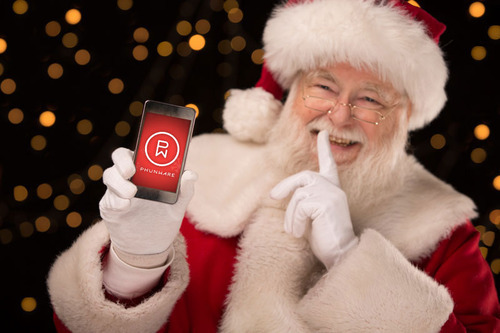By Alicia Fiorletta, Senior Editor

Editor’s note:This article was previously posted on the Phunware blog. Click here to access the original version and additional content from Phunware.
Mobile retail traffic and sales reached an all-time high over Thanksgiving weekend this year. On Thanksgiving Day alone, mobile accounted for 52% and 32% of e-Commerce traffic and sales, respectively, according to IBM research. These results reaffirm that consumers are more eager than ever to tap into their devices to browse and buy.
To take advantage of these buying patterns this year, best-in-class retailers invested in creating apps that are entertaining, enjoyable and make consumers’ lives a little bit easier. While some released completely new apps, others refined their features and capabilities to appeal to holiday shoppers. Here are a few to note:
1. Target
This big box retailer implemented a few different mobile initiatives for the holiday season. For one, the company partnered with Google on the Art, Copy & Code project to create a holiday-themed game experience in stores. In its brick-and-mortar locations, Target rolled out tablets where consumers can play Bullseye’s Playground, which includes a variety of games and activities. For every game played, Target donates $1 to St. Jude Children’s Research Hospital.
But that’s not all. Target also launched its Wish List app for parents and kids. As kids add items to their lists, parents can share them with friends and family. An augmented reality feature also helps make the Target Kids’ Gift Catalog more fun and compelling.
Finally, the retailer re-launched its mobile and tablet apps specifically for the holidays. New indoor wayfinding enhancements allow consumers to locate items in stores more easily using interactive store maps and shopping lists. (At least they do in theory. See the Phunware blog post about how that’s often easier said than done — even for Target.) And of course, Target ramped up its Cartwheel experience by offering daily deals and holiday exclusives.
- Key takeaways: Target took a variety of different approaches to mobility, adding utility and fun to its overall brand experience. When you develop your mobile strategy, it’s paramount to consider what your customers want out of the shopping experience (both online and in-store), and what you can do to make their lives easier. You will be able to develop a solid foundation of features and capabilities from there.
2. Walmart
Although Walmart’s Savings Catcher app was popular long before the holiday season, the retailer tailored the mobile experience to align with consumers’ browsing and buying behaviors during this time of year. Consumers use the Savings Catcher app to scan their receipts. The app then aggregates prices from local competitor ads. If a competitor has a lower price, Walmart will give shoppers the difference on an eGift card. Funds can either be accrued and saved or spent immediately.
While this feature of the app is normally used for grocery items, Walmart expanded the product assortment for the holidays to include toys, a top category.
- Key takeaways: Savings Catcher was already easy-to-use and provided instant gratification to shoppers. Walmart simply expanded eligible merchandise to take advantage of holiday monetization opportunities. You can take a cue from Walmart: Instead of reinventing the wheel, what small adjustments can you make to your existing mobile experiences to align better with your customers during special seasons or events?
3. Neiman Marcus
At the end of October, luxury retailer Neiman Marcus launched Snap. Find. Shop., a tool available within its mobile app. Using visual search technology, Snap. Find. Shop. allows consumers to take photos of items they see out and about, and shop Neiman Marcus inventory that is similar or identical.
A key benefit of this tool is that it provides immediate access to products and information, and it helps merge the digital and physical worlds. What better way to facilitate inspired impulse gift buys for friends and loved ones?
- Key takeaways: Sure, not every retailer wants or needs visual search in their app, but there are ways you can still make the browsing experience easier. Sometimes a mobile customer will prefer leisurely iPad shopping, while other times they know exactly what they’re looking for and want to make a purchase quickly. Are you providing the tools and capabilities to appeal to both personas?
4. Office Depot
Everyone knows Elf Yourself. It has become a staple during the holiday season. Although it’s not directly correlated with Office Depot products, it creates a great image and personality for the brand. This year, the retailer unveiled the Elf Yourself app, which includes new customizable dancing elf videos in nine languages. Users can create customized videos and even upgrade to new video options and add different songs for a small fee.
- Key takeaways: Simply put: Sometimes it’s okay to have some fun and not always think about selling! During this time of year, it can be difficult to stand out. Creating a fun, energetic and out-of-the-box app that has a seasonal spin is a great way to generate buzz. And if you can leverage a freemium pricing model like Office Depot, even better!
How are you going to use these takeaways in 2015? Comment below and let us know!






